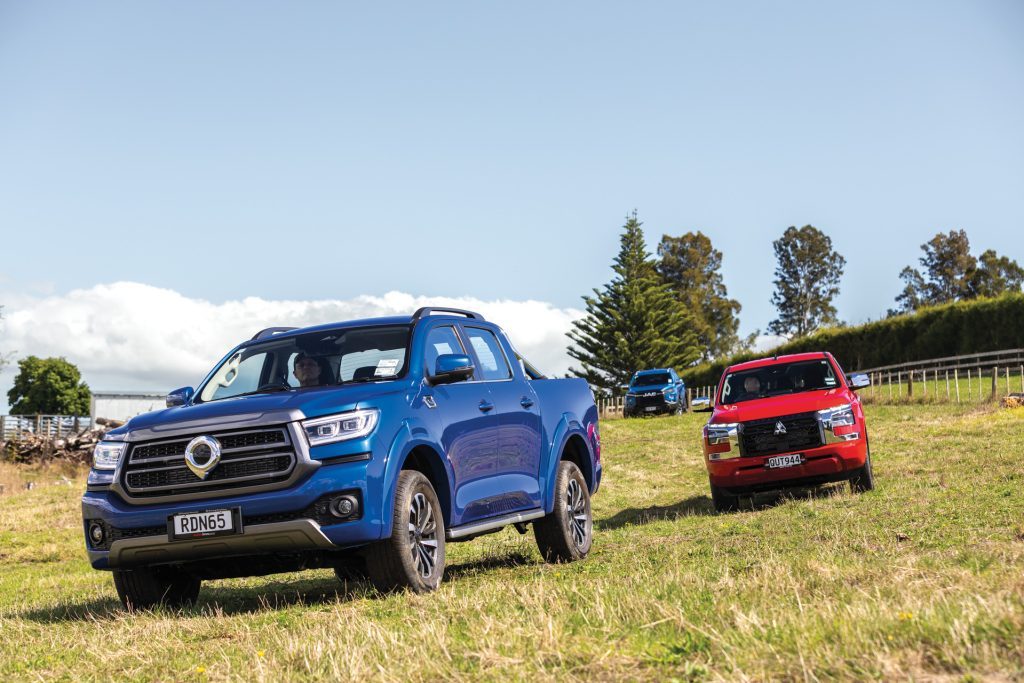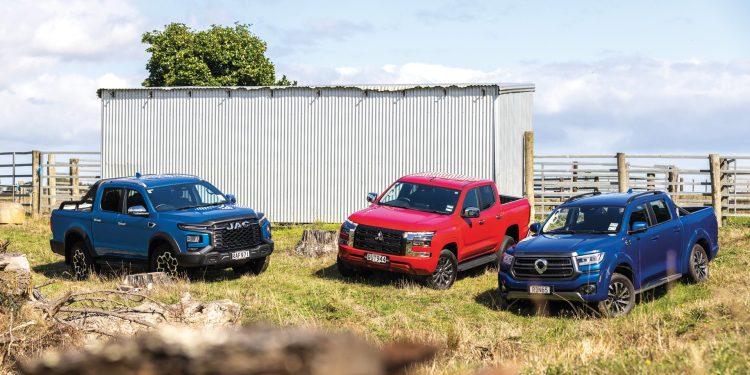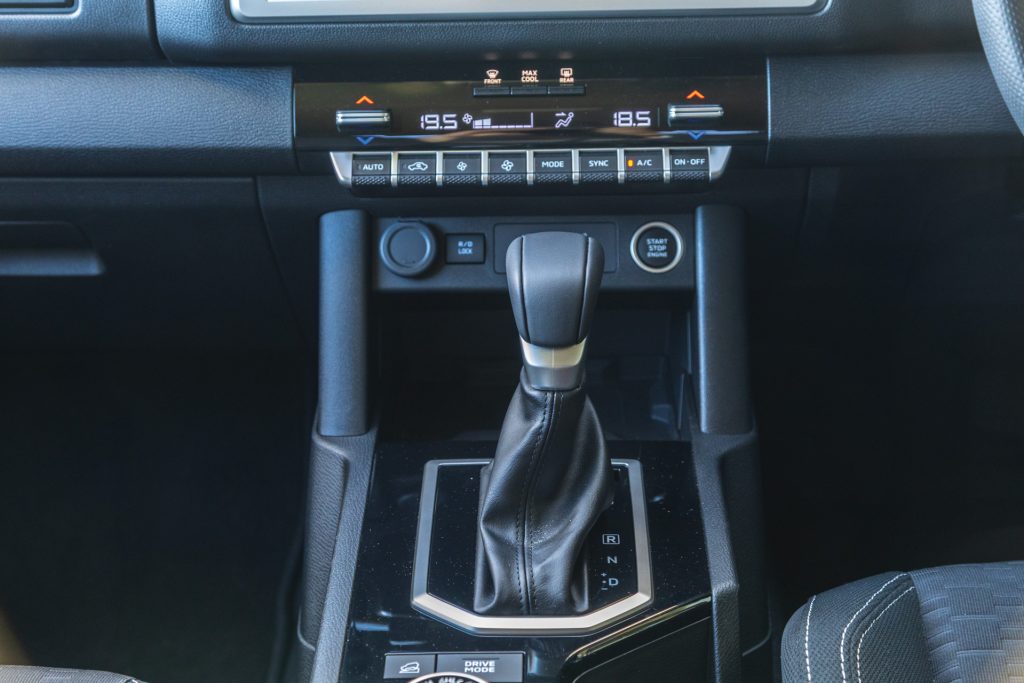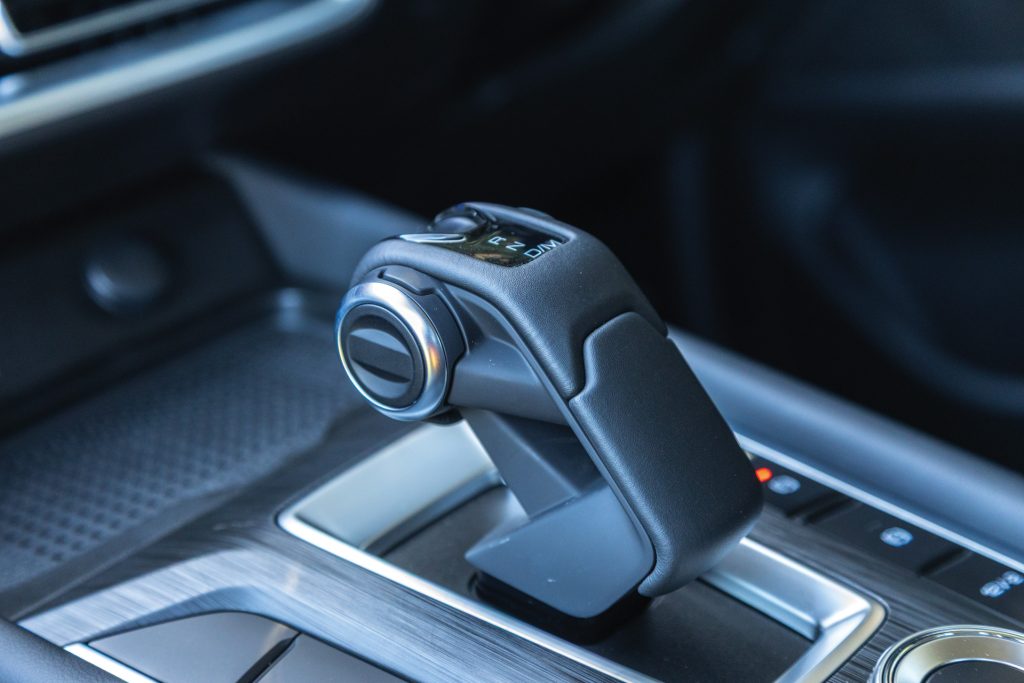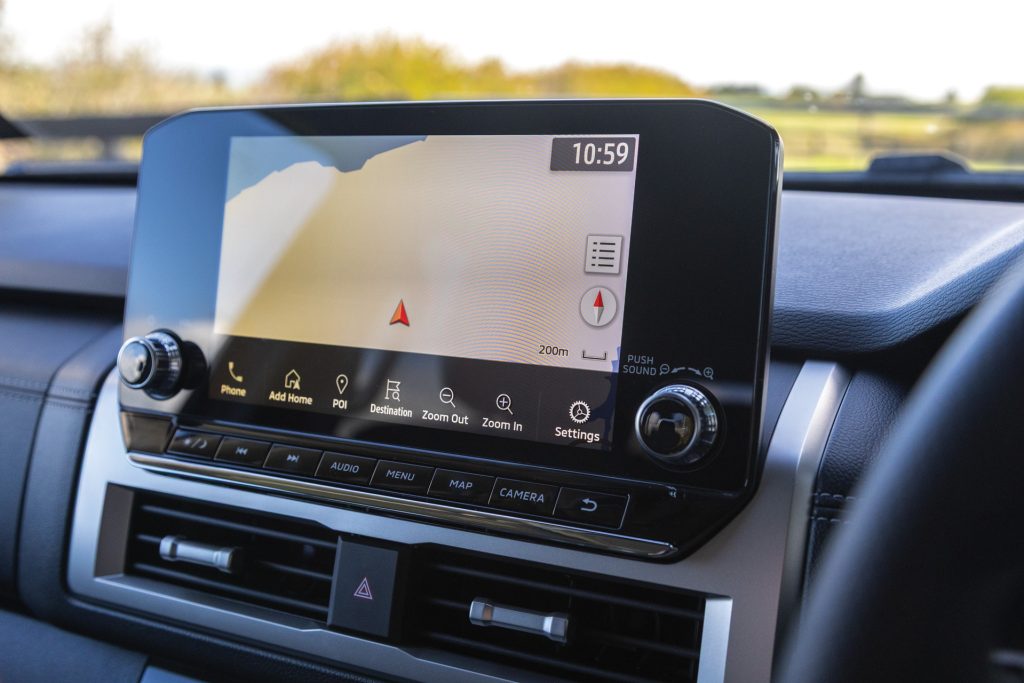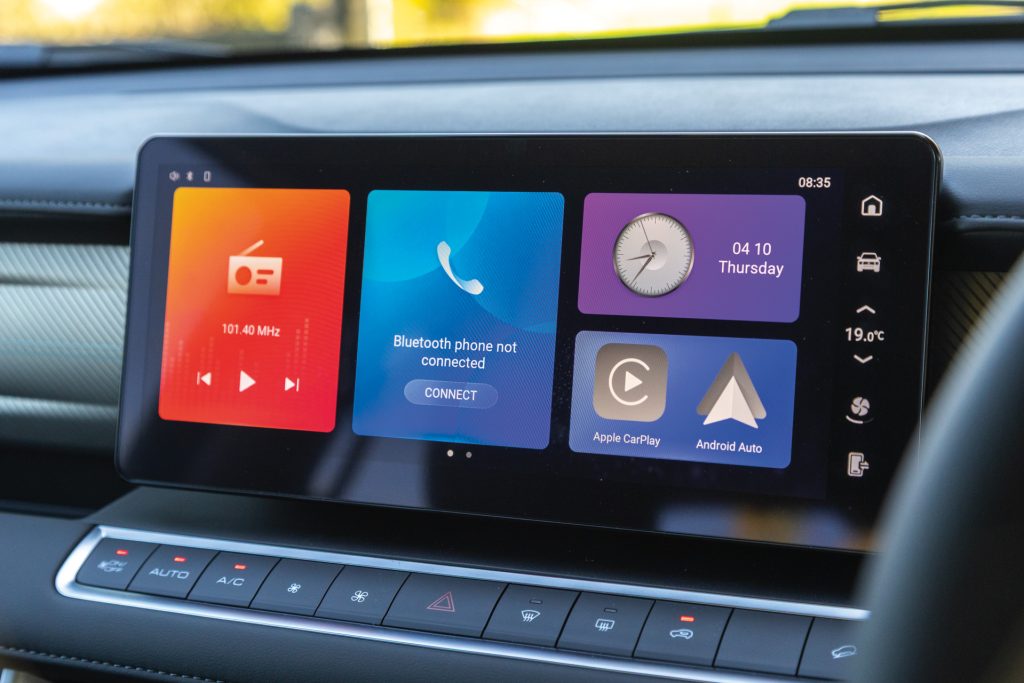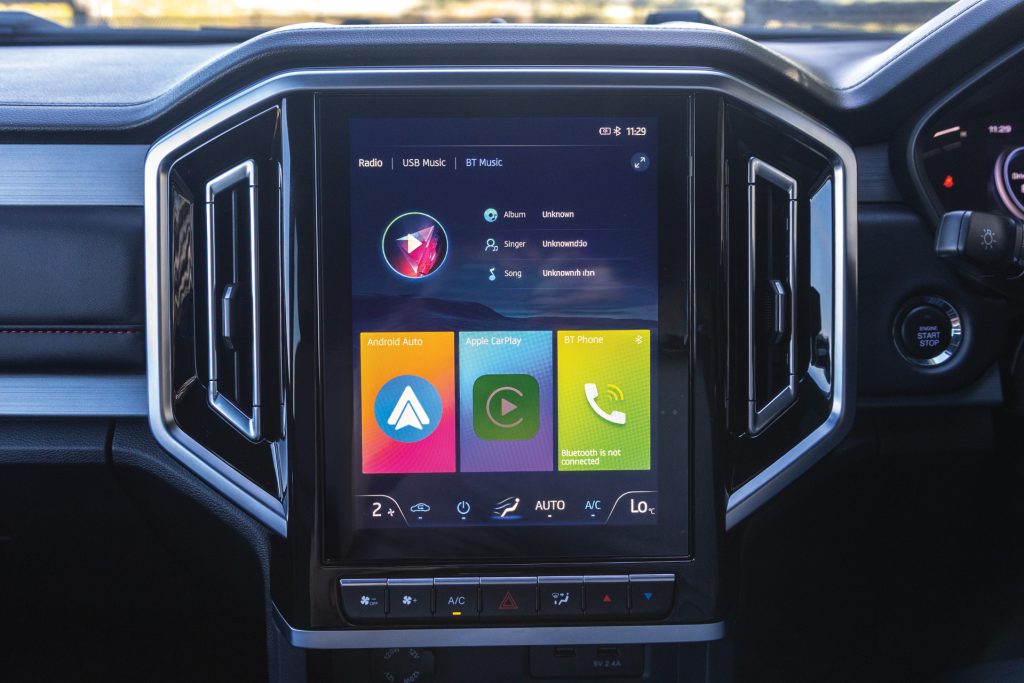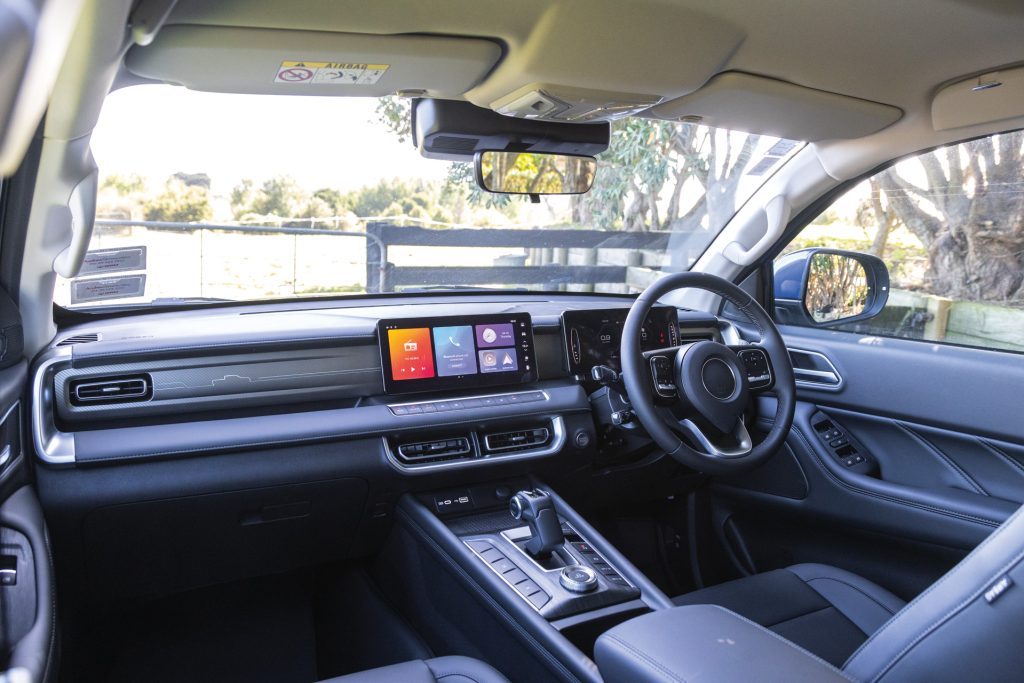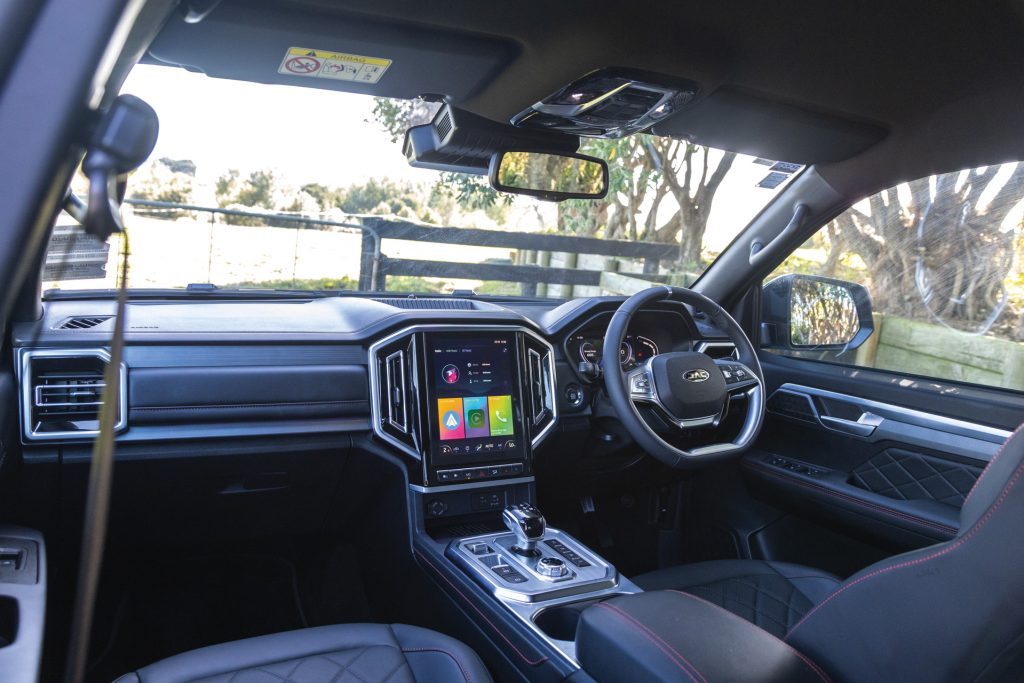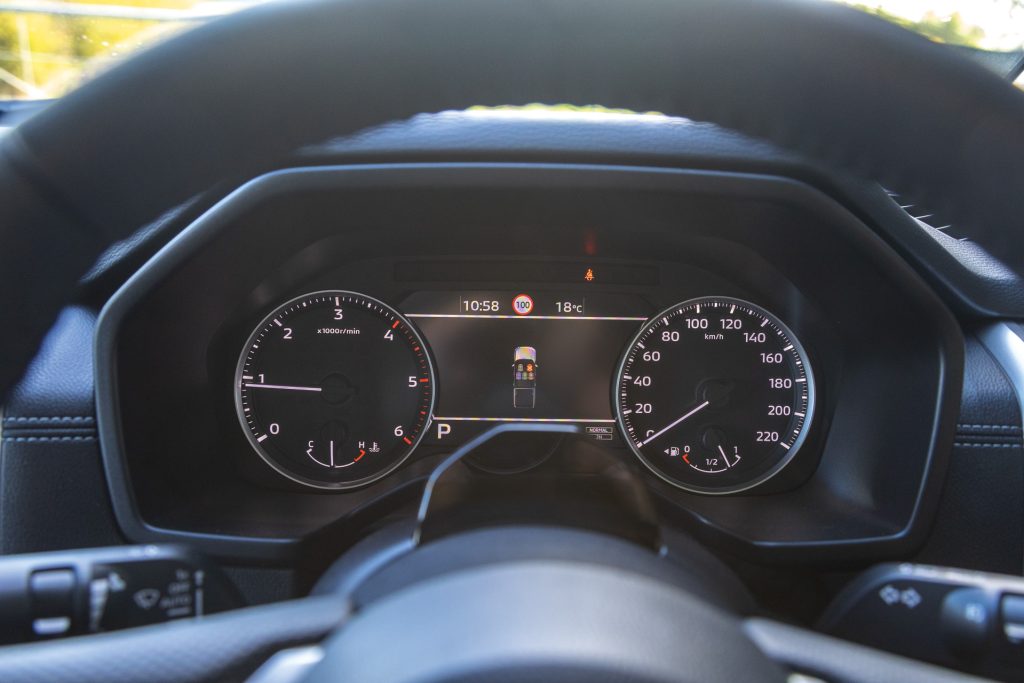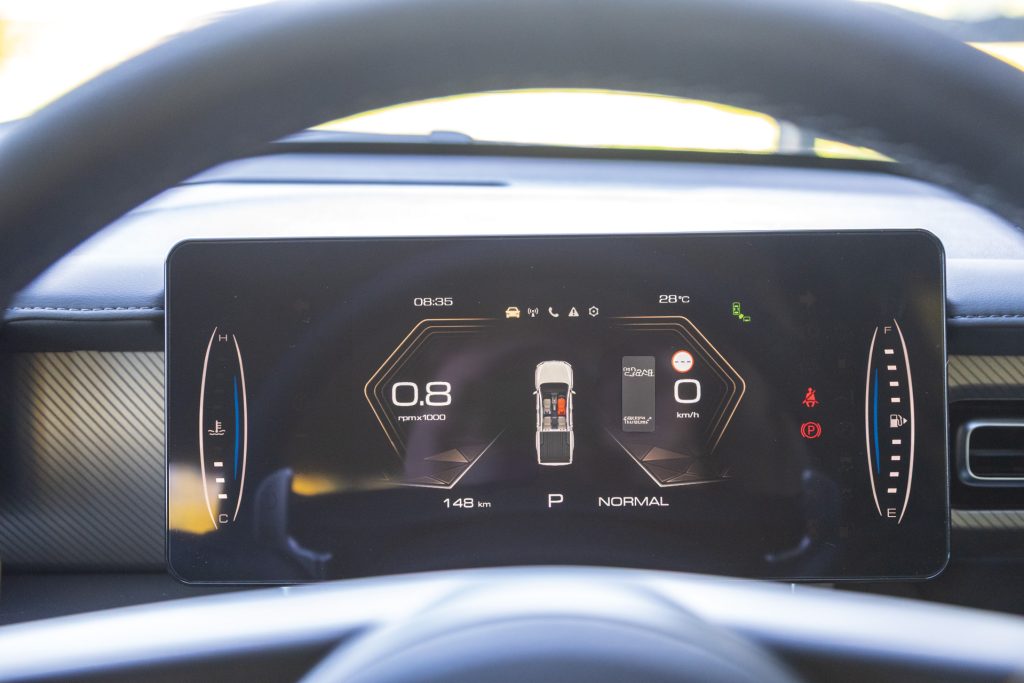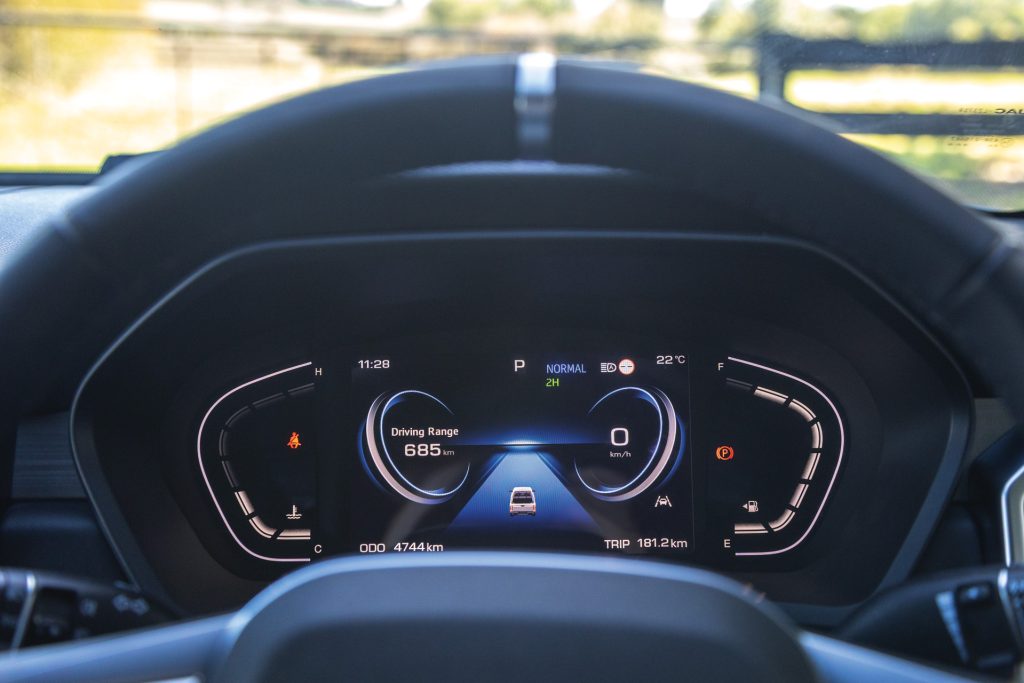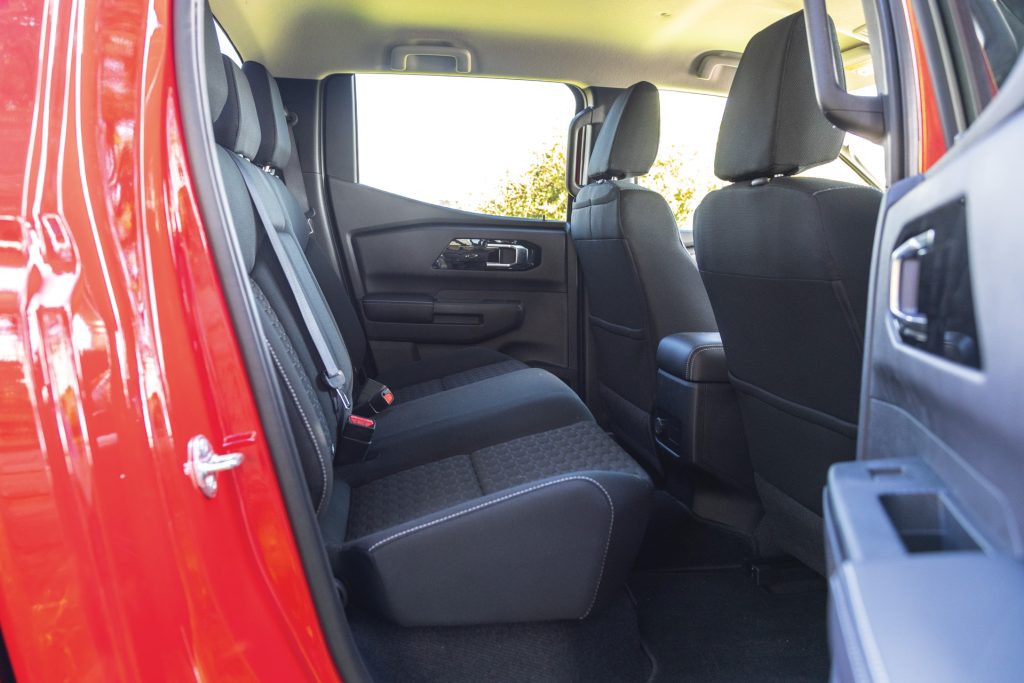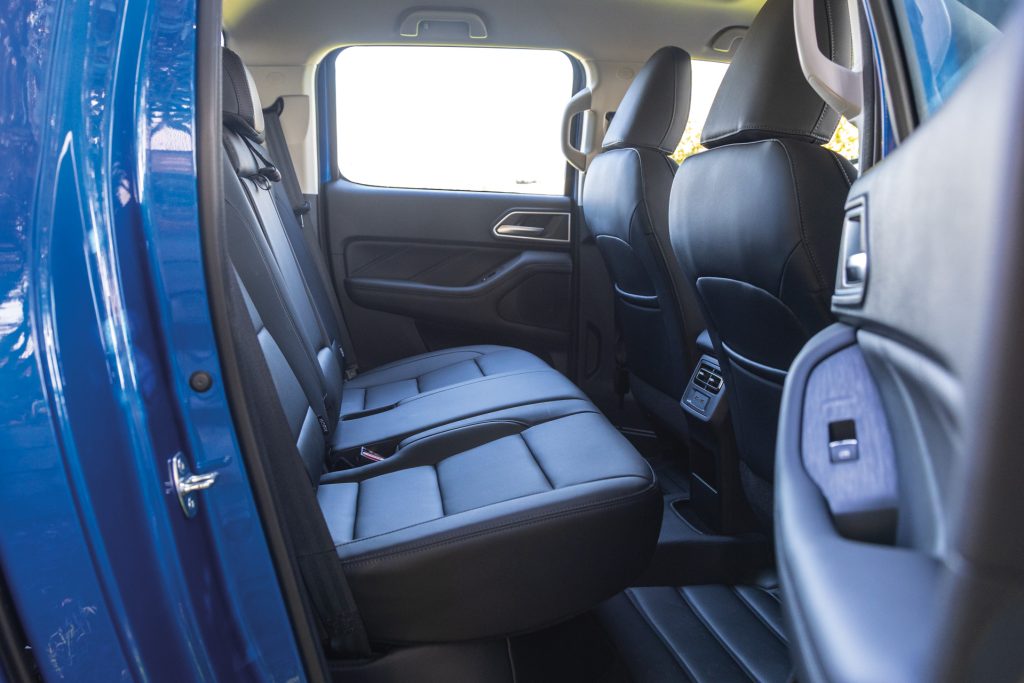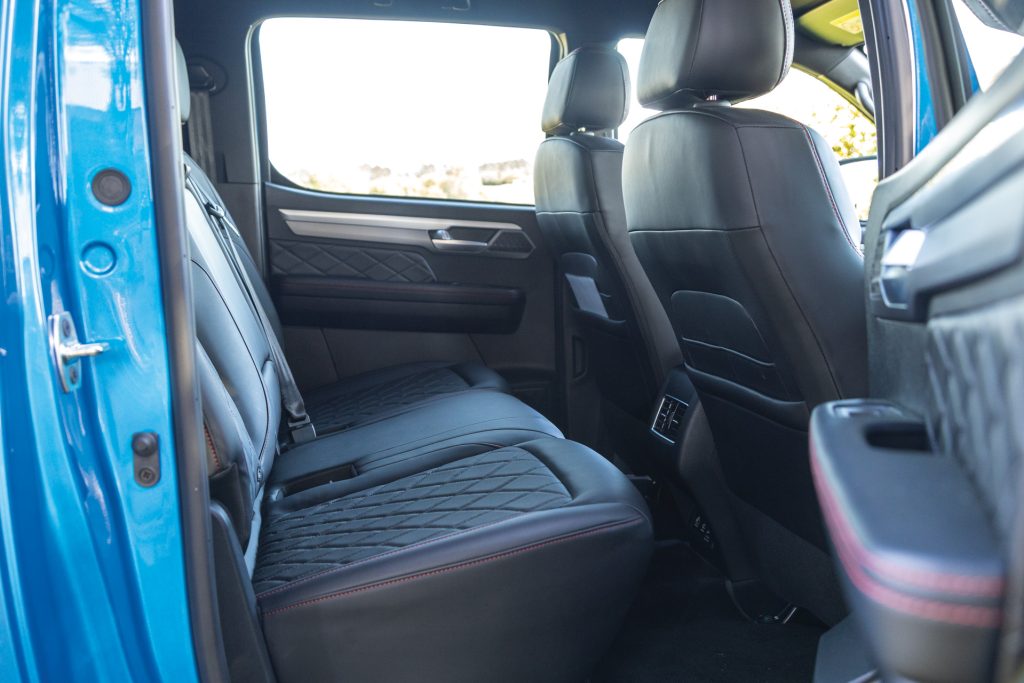2025 GWM Cannon Lux vs JAC T9 vs Mitsubishi Triton GLX-R Comparison
Words: Kyle Cassidy | Photos: Alex Schultz
Looking for good value in the ute market? These three are up there with a solid spec-to-price ratio. But where should your money go?
You can spend a lot on a ute these days. While they used to be a tool of trade with just the bare basics to do the job, pick-ups are now a lot more versatile than their utilitarian ancestors. Many are fancy, with big price tags.

But what if you’re looking for a bit more value from your next truck? Things don’t seem to be ‘back on track’ economically as the Prime CEO promised. So finding a good deal on a new truck this year could have people looking to spend less.
At the value end of the market two 4×4 double-cab utes landed with price tags in the forties yet they are hardly stripped back to the basics. In fact, they are both well outfitted. The JAC T9 is one them, a new nameplate to the market, arriving as a single, well-specified double-cab offering. Another from China is the reworked GWM Cannon that lands with a very sharp price. Are these two up to challenging one of the best-selling utes though? We brought along the Mitsubishi Triton to test their mettle.
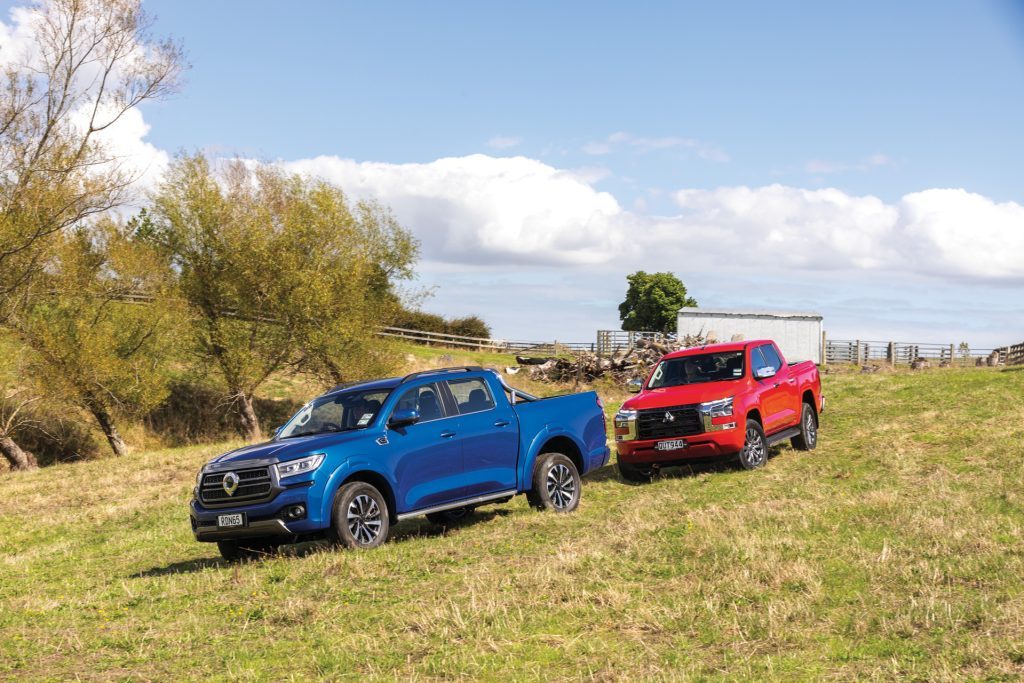
How much and what do you get?
Leading the price blitz is the Cannon, at $43,490. The T9 is $49,990 and in order to match the specification of these two, the Triton we have is the GLX-R 4×4 priced at $53,990.
These have most of what is required for modern motoring with smart key operation, a charge pad, some USB charge points, Bluetooth, CarPlay and Android Auto while the Mitsubishi adds sat nav to the list. Each has a parking camera and five-star safety with seven air bags (eight in the Mitsi). They have the requisite driver aids, some more annoying than others, and adaptive cruise. JAC adds a little luxury with a quilted leatherette interior and heated seats.
GWM has the best warranty at seven years and unlimited kays, the JAC’s is five years/200,000km while Triton is covered for five years/130,000km. So these are well matched on the spec front but you’ll note GWM’s sharp pricing.
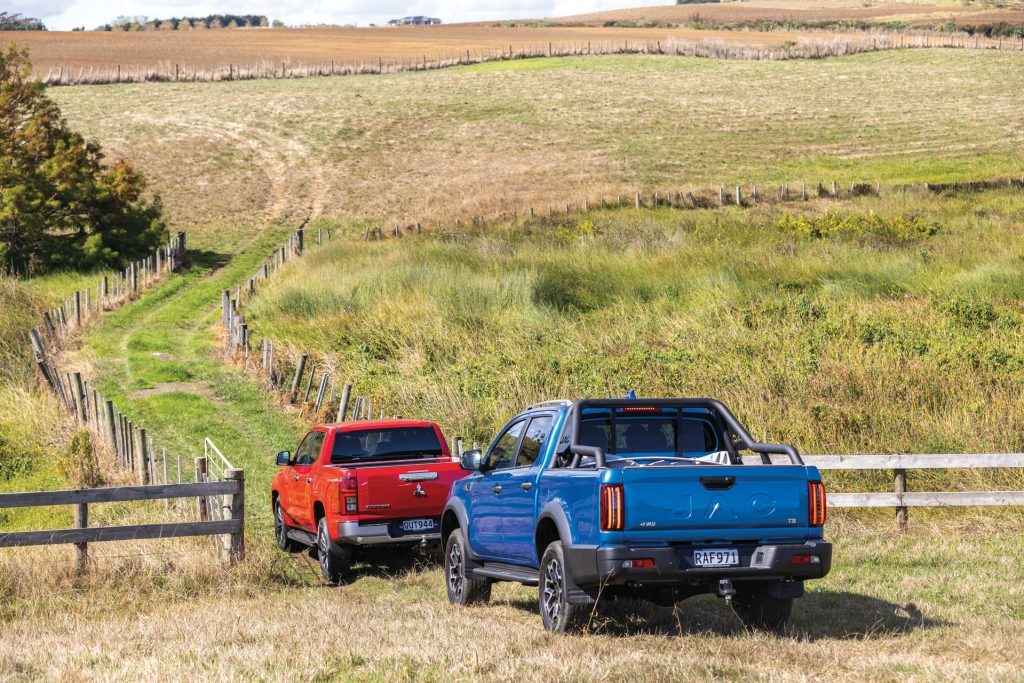
What powers them?
The Triton has the best powertrain. Its 2.4 makes 150kW and 470Nm at 1500-2750rpm and is delivered more readily thanks to the twin-turbo set-up. It might only have a six-speed auto but it manages its cogs better, sorting the ratios quicker and more smartly than the others here.
The GWM’s new 2.4 makes 135kW and 480Nm of torque. It ramps up smartly too, on from 1500rpm. Cannon has a nine-gear auto, which is a smooth operator but sometimes isn’t quick enough in sorting the right gear, getting caught out on when you need to get going again.

The JAC’s 2.0-litre makes 125kW and 410Nm at 1500-2500rpm, matched to an eight-speed auto. It’s not as responsive however with more lag than the others but is strong through the midrange. The auto is smooth and quick to upshift, but reluctant to kick down, making it feel less energetic. It isn’t quite as brisk as the other two, as you can see from the figures in the spec box.
Triton is rated at 8.8L/100km, T9 at 8.4 and Cannon at 9.6 (all figures from Rightcar). And in the real world, they are all between nine and 10L/100km. The Triton is Euro 6 compliant with the others Euro 5.
As to capability, the Cannon and Triton come with a 3.5 tonne braked tow rating, the JAC recently upgraded to a 3.2 tonne rating. On payload, the Triton can tote 1095kg, the JAC 1045kg and the Cannon 995kg.
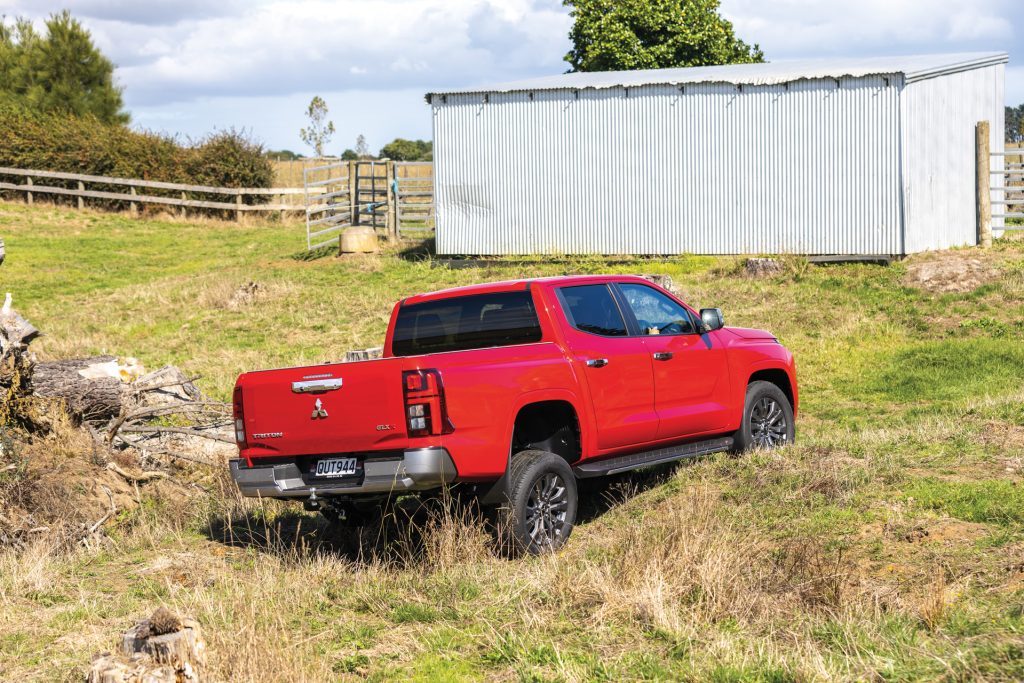
Handling the rough and the smooth
Mitsubishi has the most sorted ride on road. It’s free of the jiggle you get with the Cannon, and while the Jac is pretty cushy, it lacks the control of the Triton. The Mitsi is fitted with the most component dampers when it comes to absorbing bumps and maintaining composure. Cannon has a large turning circle, whereas the Triton and JAC are more manageable.
The Triton also has superior steering, better assisted and with more of a connection. Both the JAC and GWM are overly light (even when the steering is set to ‘Sport’) with less road feel.
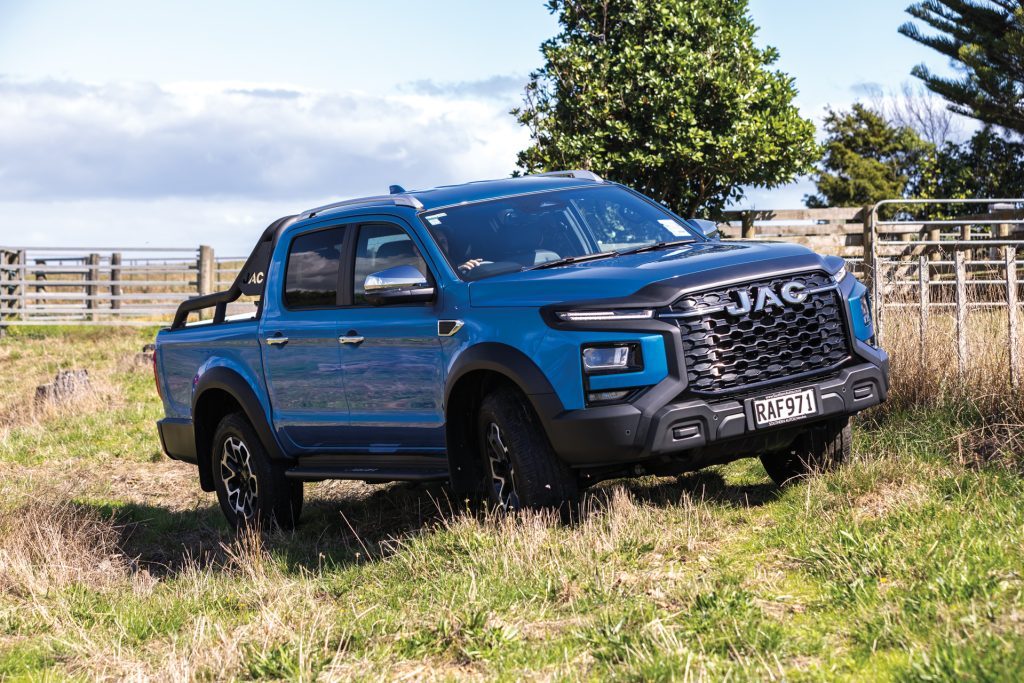
No surprise then that the Triton feels the best in the bends, although as each has the same tyre spec, ultimate stick is quite even. The more softly sprung JAC rolls more, especially at the rear, the Cannon bringing better manners but overall the Mitis has the better roll and bump control.
Through the paddocks, the T9 is quite settled over the lumps, with the most travel. The Triton feels a bit firm, and runs out of travel on the bigger bumps while the GWM feels even bouncier on the rough terrain.

Each has a slightly different 4×4 set-up. The JAC has the usual 2H, 4H and 4L settings while the Cannon runs an on-demand system, meaning the rears have to momentarily slip before torque is fed to the front. It’s a bit snatchy at times. The Triton has four settings; 2H and 4H, the latter an auto mode, as well as a 4HL setting with a locked centre diff for slippery trails, and 4L.
The Cannon’s on-demand system made harder work of the mild obstacles we faced on the farm; it’s harder to be smooth when slow and steady progress is required. Each has a diff lock helping them ease up on to the stump. The JAC has the most clearance at the front, the Triton the least, although the Mitsubishi’s 4×4 driveline made easier work of it all.
On guard
Each has myriad driver aids, all necessary to gain top marks in crash tests. But they can be annoying too. There is no driver monitor in the Cannon, but you’ll want to disable the lane keeping. It jerks you about on the motorway while also deciding to take over the steering with evasive manoeuvres at times. The active cruise likes to keep a big gap to the traffic in front and is quite noisy in operation.
The Triton’s drive monitor does not like you wearing sunglasses, but is okay when you’re not. Otherwise its safety features lay in the background, the lane keeping okay in action.
The JAC goes in for overkill, bonging heaps with overspeed warnings and constant prompts to remain vigilant while driving. The lane keeping is trigger happy too. However, the active cruise with lane centring works alright on motorway.
Work and play
The Triton has the best comfort and support behind the wheel. Like the Cannon, you’ll have to manually adjust the seat, no biggie really. We prefer the cloth trim to the vinyl of the Cannon (sweat inducing), and while the T9 gains heating elements and electrics, the seat adjustment is limited. The flexibility at the wheel is restricted too, moving only up and down.
Some bits feel flimsy in the JAC’s interior, like the fuel cap release lever and 4×4 switch. The JAC’s cruise refused to work one day, then was fine the next, and the radio had a mind of its own, randomly changing stations. The interior detailing is flashy, the shiny bits reflecting the sun harshly. It has the largest screen, which is good for the surround view camera, though it’s also hampered by reflection. The 150W three-pin plug in the back might come in handy.
The GWM is well made, and nicely finished. It’s the most modern looking, with the most soft touch points too. Like the others, storage is okay, although its cup holders are a little small. The central display has a widescreen format with a vibrant resolution and quick response, though some of the soft buttons are too small. Its reversing camera is complemented by a side view feature.
Some of the finishing in the Triton is to a price point, the carpet thin for instance, the softer touchpoints applied sparingly. But it’s screwed together well. It’s a little quaint with its analogue dials and smaller screen but, wouldn’t you know, it’s the easiest to fathom. A few knobs and buttons make for easier operations, the main screen is essentially an infotainment interface and it’s the only one with sat nav. The manual handbrake will be appreciated by the farm hands in the paddock.
Triton also has a smidge more legroom in the rear but there’s not much between them back there. All have Isofix points, but the Triton lacks USB outlets while the GWM alone lets you flip the seat up if you have stuff to store in the cabin.
The triton is the best ute here, but also the most expensive. in times where every dollar counts, the $10k difference between this and the Cannon is harder to overlook.
At the business end, the Chinese crew run with bigger trays. The Cannon’s is 20mm longer than the T9’s at 1540mm, and is wider at both the tailgate (1410mm v 1350mm) and between the arches (1180mm v 1140mm). With its drop-in tray liner in place, the Triton measured up at 1420mm long, 1340mm wide at the tailgate and 1100mm between the arches. None has a bumper step to help you up into the tray. The JAC’s extended sports bar makes it even harder to retrieve stuff from the side of the tub, and only the Cannon has a soft opening and easy closing action. The T9 and Cannon both come with a spray-in liner, the JAC’s covering the tops of the welllside too. Each has four tiedown points.
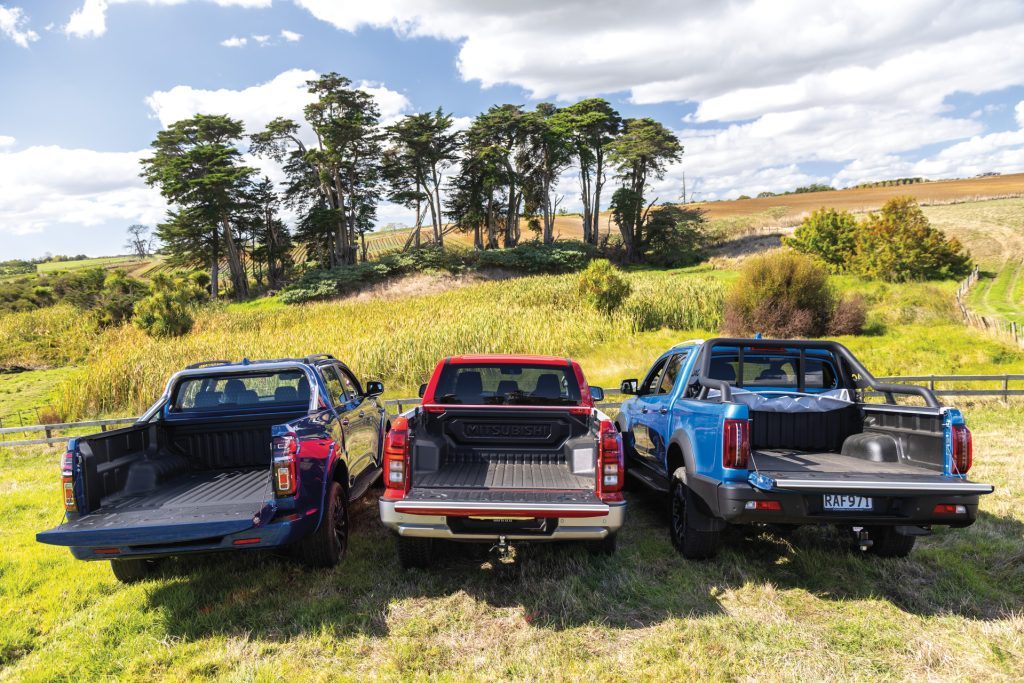
And so what’ll it be?
The Triton is the best ute here, but also the most expensive. In times where every dollar counts, the $10k difference between this and the Cannon is harder to overlook. It represents a big step forward for the GWM brand, goes well, with the right capabilities and it’s great value. The T9, not being all new (only new to our market) shows its age against these too, dating back to 2020. It has a strong spec, and its solid underpinnings go well off road, but it has a few too many irksome traits. So go Triton if the extra spend isn’t an issue, or the GWM if it is, knowing it’s a solid offering at the price.
GWM Cannon Lux
$43,490 / 8.4L/100km / 221g/km
0-100 km/h 10.12
80-120 km/h 8.54s (241m)
100-0 km/h 37.45m
Speedo error 97 at an indicated 100km/h
Ambient cabin noise 70.4dB@100km/h
Engine 2370cc / IL4 / TDI
Max power 135kW@3600rpm
Max torque 480Nm@1500-2500rpm
Drivetrain 9-speed auto / on-demand AWD
Front suspension Wishbones / sway bar
Rear suspension Solid axle/leaf springs
Turning circle 13.1m (3.1 turns)
Front brakes Ventilated discs
Rear brakes Discs
Stability systems ABS, ESP
Safety AEB, ACC, BSM, LDW, RCTA, ALK, AHB
Tyre size f/r-265/60R18
Wheelbase 3230mm
L/W/H 5416 / 1947 / 1884mm
Track f-1580mm r-1580mm
Fuel capacity 78L
Tow rating 750kg (3500kg braked)
Service intervals 12 months / 15,000km
Warranty 7yrs / unlimited km
ANCAP rating ★★★★★ (2021)
Weight (claimed) 2230kg
JAC T9
$49,990 / 8.4L/100km / 221g/km
0-100 km/h 12.37s
80-120 km/h 9.66s (275m)
100-0 km/h 37.90m
Speedo error 97 at an indicated 100km/h
Ambient cabin noise 65.5dB@100km/h
Engine 1999cc / IL4 / TDI
Max power 125kW@3600rpm
Max torque 410Nm@1500-2500rpm
Drivetrain 8-speed auto / switchable 4×4
Front suspension Wishbones / swaybar
Rear suspension Solid axle/leaf springs
Turning circle 12.4m (3.1 turns)
Front brakes Ventilated discs
Rear brakes Discs
Stability systems ABS, ESP
Safety AEB, ACC, BSM, LDW, RCTA, ALK, AHB
Tyre size f/r-265/60R18
Wheelbase 3110mm
L/W/H 5330 / 1965 / 1920mm
Track f-1610mm r-1610mm
Fuel capacity 76L
Tow rating 750kg (3000kg braked)
Service intervals 12 months / 15,000km
Warranty 5yrs / 200,000 km
ANCAP rating ★★★★★ (2024)
Weight (claimed) 2055kg
Mitsubishi Triton GLX-R 4×4
$53,990 / 8.8L/100km / 233g/km
0-100 km/h 9.62s
80-120 km/h 7.42s (211m)
100-0 km/h 38.87m
Speedo error 97 at an indicated 100km/h
Ambient cabin noise 71.0dB@100km/h
Engine 2442cc / IL4 / TDI
Max power 150kW@3500rpm
Max torque 470Nm@1500-2750rpm
Drivetrain 6-speed auto / switchable 4×4
Front suspension Wishbones / sway bar
Rear suspension Solid axle
Turning circle 12.4m (3.2 turns)
Front brakes Ventilated discs
Rear brakes Drum
Stability systems ABS, ESP, TV
Safety AEB, ACC, BSM, LDW, RCTA, ALK, AHB
Tyre size 265/60R18
Wheelbase 3130mm
L/W/H 5320 / 1930 / 1815mm
Track f-1570mm r-1565mm
Fuel capacity 75L
Tow rating 750kg (3500kg braked)
Service intervals 12 months / 15,000km
Warranty 5yrs / 130,000km
ANCAP rating ★★★★★ (2024)
Weight (claimed) 2125kg
